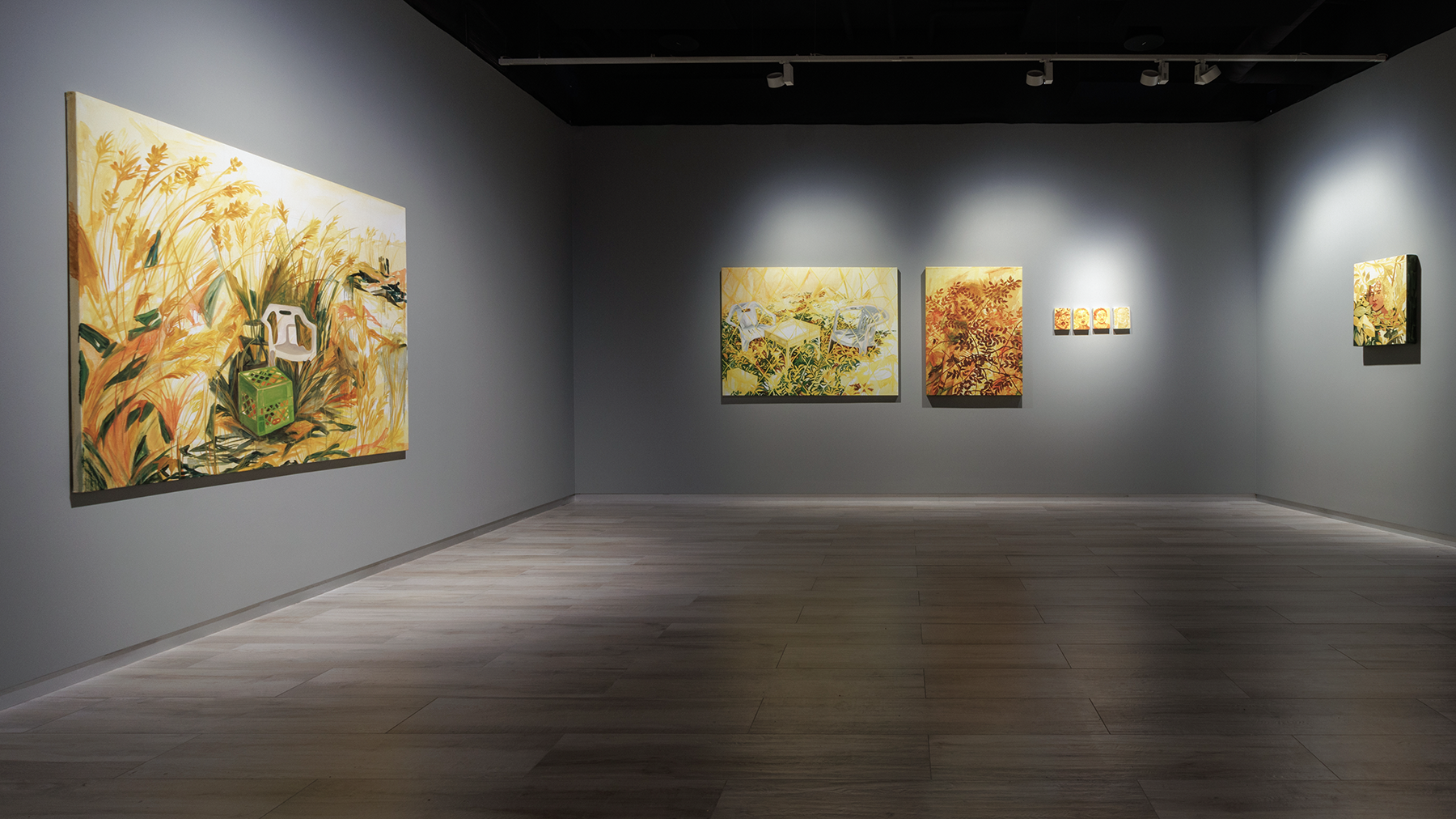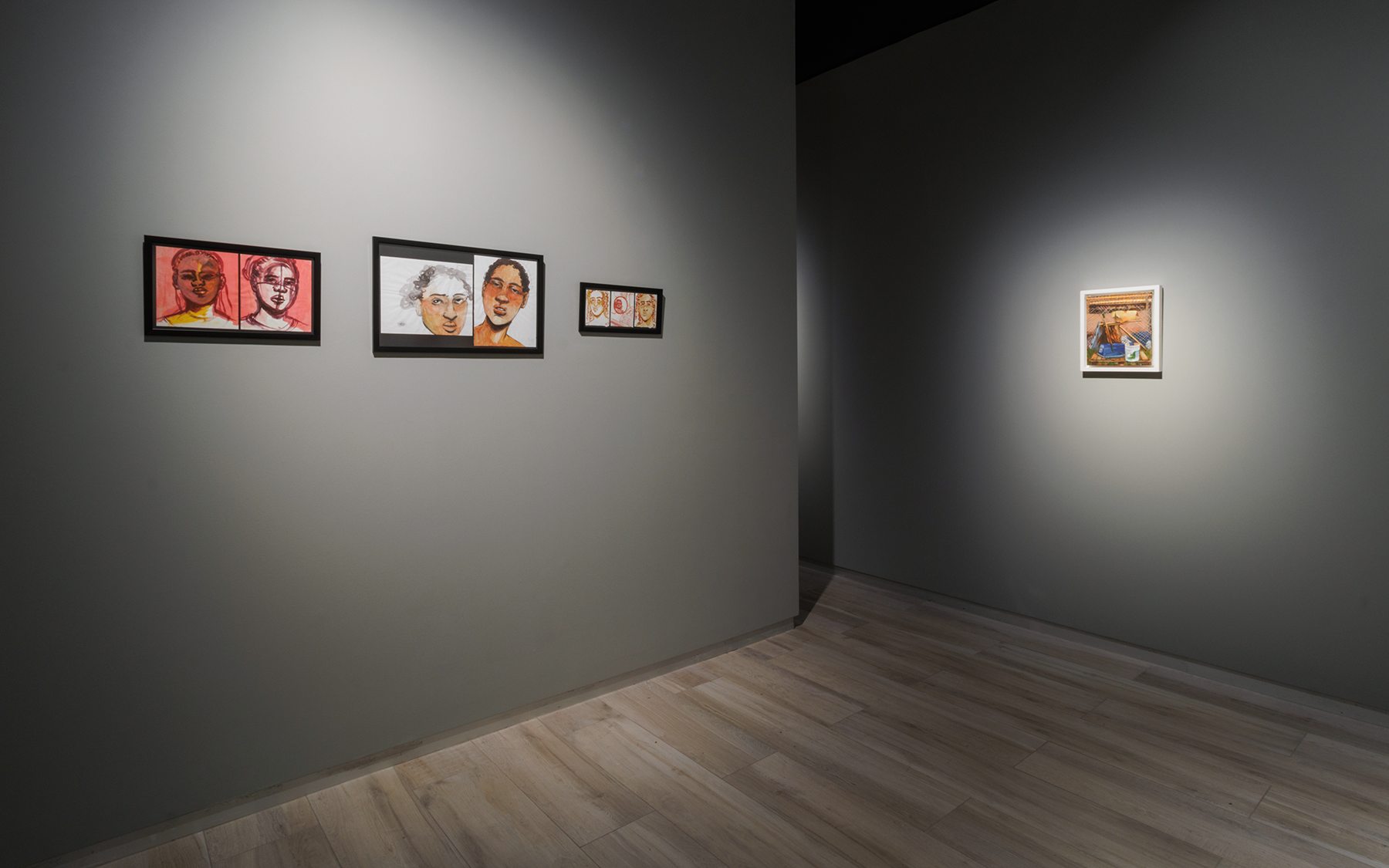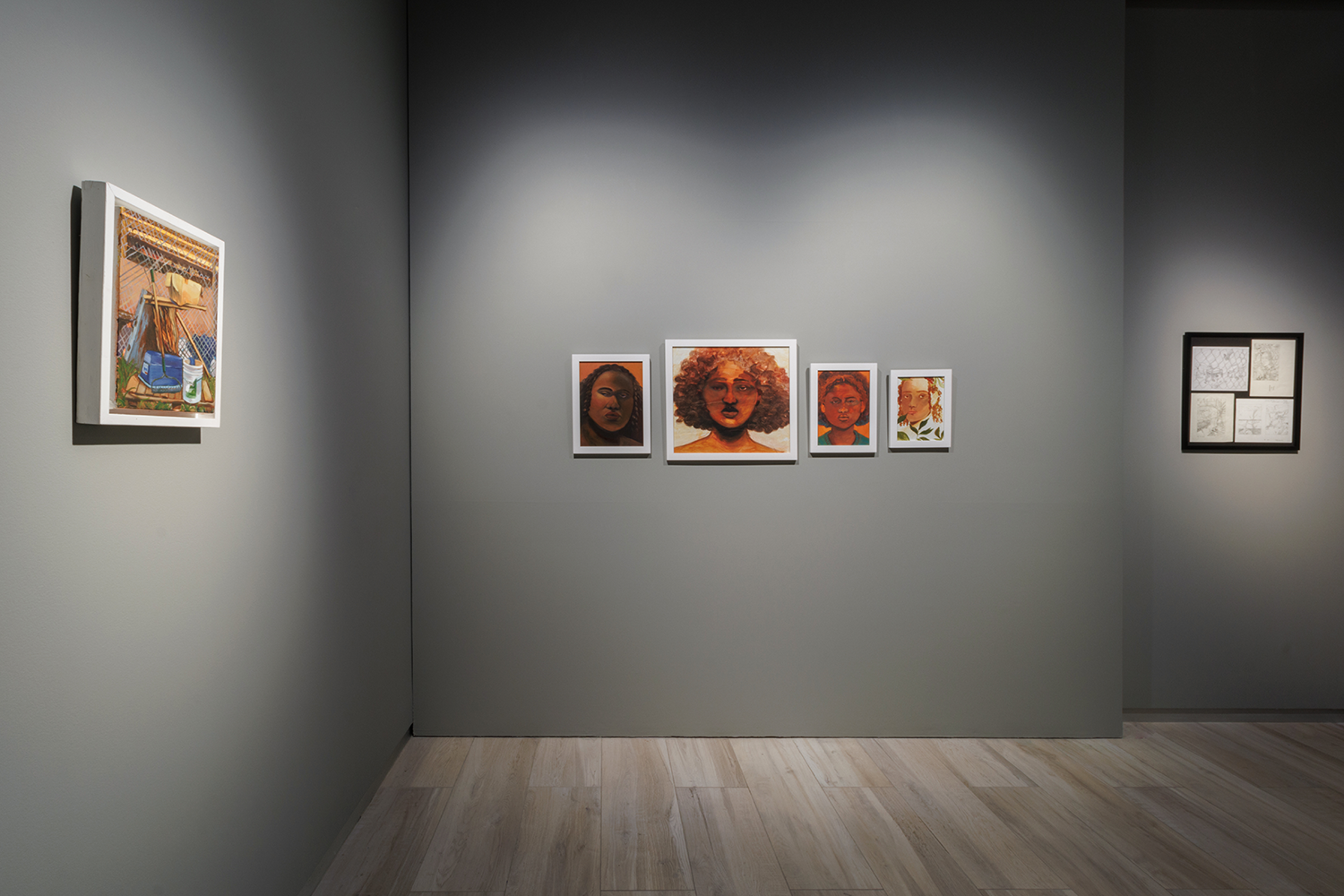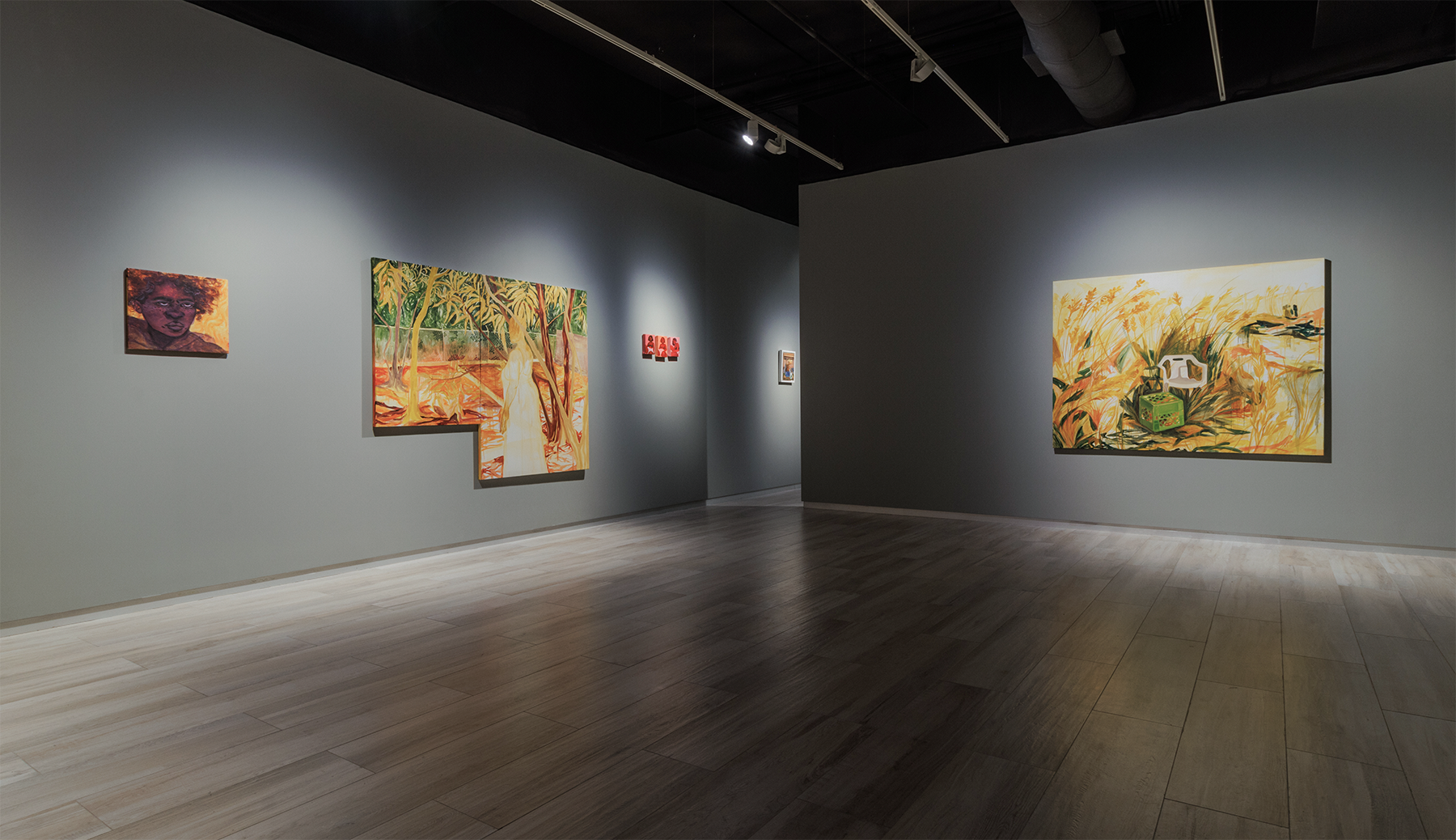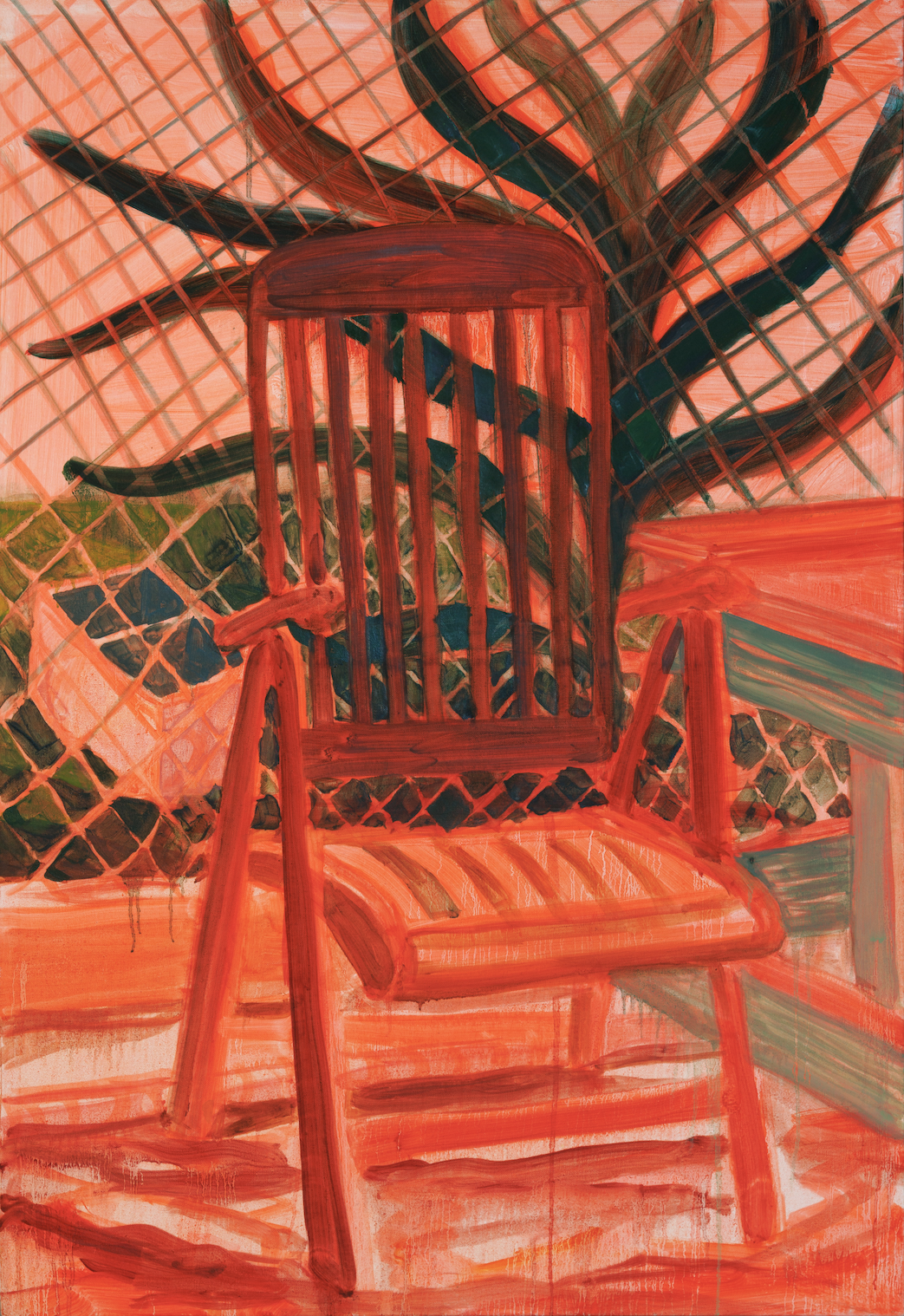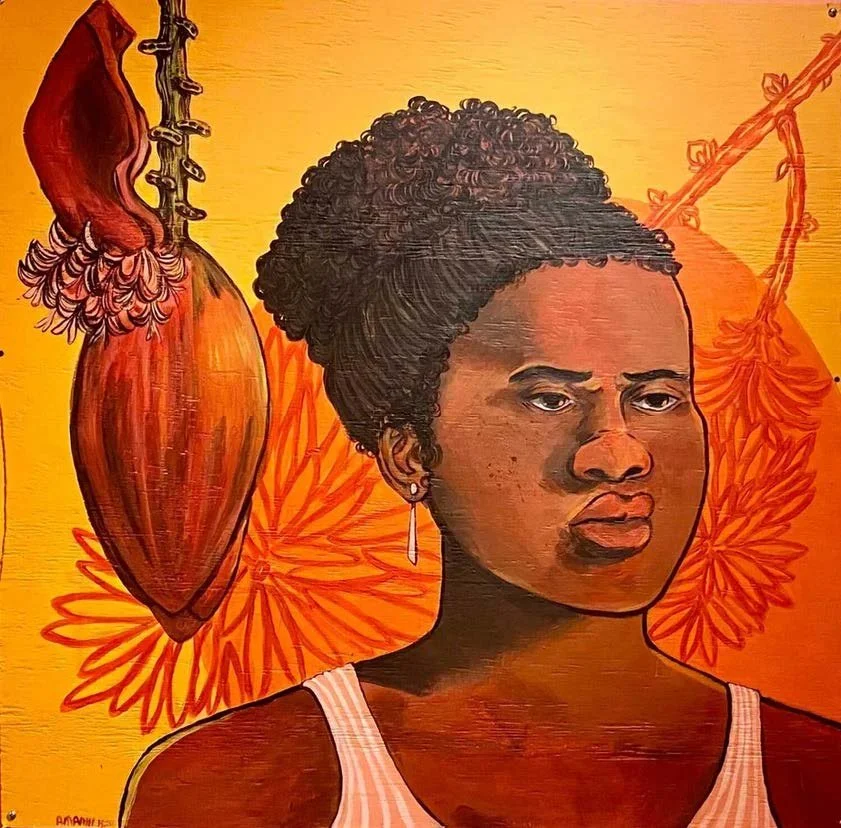IN THE SWAY OF THE WIND
Amaani Hepburn
July 19th - August 28th 2024
Honesty has long been advanced as the most essential role of the artist and their voice.
It is taught that anchored to honesty, one becomes impervious to and also parallel from the deceit of society which is the root of all ills in our world. Through time artists learned to use the deception they supposedly stood in perfect opposition to and in critique of. In the ultra-contemporary, deception has become an equally essential device, as it serves to disrupt societal complications and pressures placed on the modern artist. The necessity of the ultra-contemporary artist to create systems of disruption in the work, or moreover, to advance forms and lines of communication that are disruptive, is a direct byproduct of the visibility and subsequent vulnerability brought about by the information age. With the advancement of cameras and then the camera phone, everyone is “on view” and distant places are in the palms of our hands. Deception through the manipulation or strategic lack of manipulation of audiences’ perceptions is therefore the most versatile tool for the artist looking to engage an audience who has seen and done it all before.
Shakespeare’s “All the World’s a Stage” is more fact than poetry now more than ever. The clearest evidence of this is the concept, construct, and scalability of Celebrity. The Information age has brought us the idea of existing in a “known” universe. Having information has given us the impression of understanding (i.e. I have heard all the Beyonce songs, read all the information online, and watched all the interviews; therefore, I know Beyonce). As an audience, this new complication of understanding is all that we encounter because we are aware of it (“oh, I’ve heard of that”) or it is familiar to us (“oh, I’ve seen that before’’) or we have easy access to it (“I’ll google it”). This clouds our view and can hinder communication, much like a listener anticipating the end of a sentence. Artists like Warhol and Prince wielding mystery and persona at the audience could be understood as a way to disrupt the effects of their audience’s distance (figuratively and literally) from the artist. Of particular note are the ways artists engaged in performing persona pay precise attention to the performance when engaged with members of the audience with influence over how society forms its opinion of the work (i.e. other artists, curators, critics, journalists, anyone who asks for an explanation of the work verbally). In this way, deception has allowed the artist to hold honesty and privacy in the same hand.
Fine art practice is a juggling act. The added efficiency of communication and distance from the audience derived from deception can lend toward a more adept performance if the artist is diligent. The audience becomes locked into a seamless/simultaneous conversation, both conscious and subconscious. This conversation, which in this case posits that marks made by the artist are material concept/exploration, conceptual content/exploration, and here in Amaani Hepburn’s work, especially present is the added layer of image content/exploration. Of most relevance is the illusion of imagery, which provides for deception through symbolism and iconography. Contained in imagery is the ability to mislead the audience, by way of their own belief, they understand what they see or by providing codes with no key code. Hepburn’s love/hate relationship with detail/precision and her complication of representational ideas/themes with abstract notions/intentions can also serve to dizzy viewers as they try to set their feet around the ideas of what is being asserted. What is given away in the exchange is those audience members unaware of the deception. They miss the magic much like the spectator who is ignorant that rabbits do not live in hats.
The problem-solving of seamless and invisible movement through the three realms of content/exploration (material, concept, and image) is arguably the ultimate goal of the ultra-contemporary practitioner. This must be done while saying something important about our existence in time. Both the words “our ‘’ and “time” here are meant fluidly, as artists are expected to speak to/for their generation, but also to/for other generations. Artists are expected to represent and speak to and through the lens of the time they inhabit, but the truth must cut through to new moments in time and retain a voice even if something is lost in translation fifty years later. Hepburn, out of this complication, often passes up the opportunity for understanding to remain in the power of a universe untouched by the will of the audience and steps forward with a song. Tied to this idea is the true window into Hepburn’s work. In these paintings, one can hear the artist say plainly, time on time, again and over again, “Inside me, there is a universe inhabited by me. There are places set for those I love. It is untouched by the world.”
-Matthew Rahhming
... to a point of mutual understanding , 2024, Oil on canvas, 66" x 84"
Of This Bush , 2024, Oil on canvas, 60" x 78"
Our Dearest Conversation , 2024, Oil on canvas, 48" x 66"
Carry that Cross the Way , 2024, Oil on canvas, 48" x 60"
Primal Reduction , 2024, Oil on canvas, 48" x 36"
Our Lady´s Throne, 2024, Oil on canvas, 47" x 32.5"
...true February peas bloom in December, 2024, Oil on canvas, 25.625 x 19.5"
Sweet Gyal, Tiyad, 2020, Oil on paper, 22.25" x 24.25"
Sour, 2019, Acrylic on canvas, 18" x 20.5"
Off the Butcher ́s Block , 2022, Oil on canvas, 16.5" x 13.5"
Twist Mouth, 2020, Oil on canvas board, 12" x 16"
Hanging Fruit is Mine, 2020, Oil on unstreched canvas, 14" x 10"
February Peas Reflective , 2024, Oil on watercolor paper, 14.5" x 11.5"
The Spectator , 2023, Watercolor on paper, 6.75" x 16"
On Refraction , 2022, Watercolor on paper, 14.5" x 26"
In a Warped Sense , 2021, Acyrlic on paper, 10" x 17.5"
Studies For Memories Past and Preserved (Voice of a murderer text by Lea Pinder), 2020-2023, Pencil on paper, 22.75 x 22.75
Banana Milk, 2024, Oil on canvas, 9" x 6"
Golden Awe , 2020, Oil on canvas, 9" x 6"
Slit Through the Veil, 2024, Oil on canvas, 8" x 6"
through the reeds , 2024, Oil on canvas, 9" x 6"
To Be Loved in Another's Sunshine (1), 2022, Acrylic on canvas, 6" x 8"
To Be Loved in Another's Sunshine (2), 2022, Acrylic on canvas, 6" x 8"
To Be Loved in Another's Sunshine (3), 2022, Acrylic on canvas, 6" x 8"

